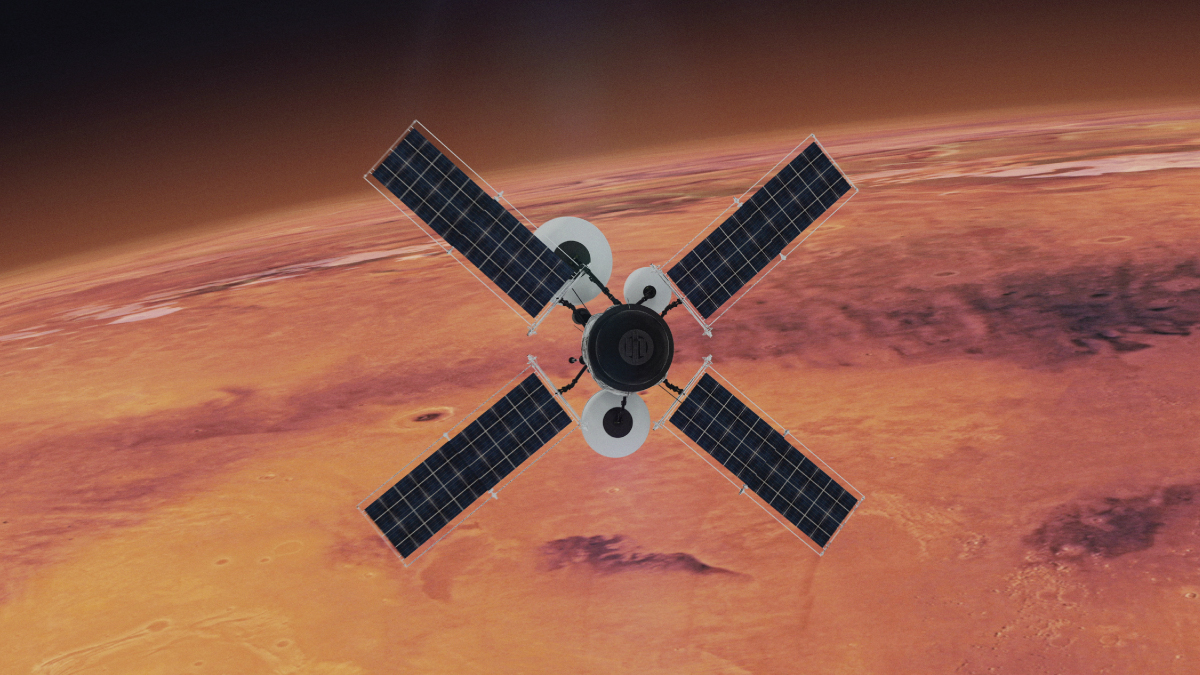
Satellites are becoming more maneuverable and agile. As space becomes an increasingly contested landscape, resilience across orbital regimes will be paramount.
Read our top four takeaways from our conversation with Tom Campbell, President of Space Missions at Redwire Space, or listen to the full episode.
Takeaway 1: Space is increasingly considered a warfighting domain.
“Consider it a warfighting regime,” Campbell said. “If we want to maintain advantage, we need to have warfighters that are building spacecraft and operating spacecraft to maintain superiority in space.”
Looking back on the history of other branches of the military, whether on land, air or sea, protocols around warfighting sought to exploit the advantages of that landscape. In space, that includes building flexibility and resilience into space systems. “Traditionally, spacecraft were always stationary in space or just orbiting, not moving around,” Campbell said. To gain an advantage on orbit, spacecraft with the ability to change orbit and distribute assets across multiple orbital regimes will be crucial.
“General Guetlein [of Space Force] talks about our adversaries flying their spacecraft around dogfighting,” Campbell said. “We need to be able to do the same.”
Takeaway 2: Maneuverability and SM&L
In “any other traditional warfare regime, everybody started out stationary,” Campbell said. “The army build forts… until they had the logistics to start moving about.” As the requisite technology develops, the same transition will happen in space, and traditionally stable satellites in stable orbital regimes may begin to shift to welcome spacecraft that can maneuver quickly and regularly.
“It comes back to resiliency. Spreading the assets around gives you that layer of resiliency,” he said.
With the concept of highly maneuverable spacecraft, “the paradigm of orbits themselves are falling apart a bit,” Campbell said. Having non-stationary assets in multiple orbits allows an operator to maneuver without regret and also enables more rendezvous and proximity operations such as refueling. “The warfighter won’t always have to be worried about the gas tank being empty,” Campbell said.
Takeaway 3: Proliferated sensors will support the development of autonomous space systems.
Gathering data from multiple sources and fusing it together to be useful will be key to making sense of the space landscape, especially in a theoretical time of conflict. “Understanding the battle space today is important,” he said. “You need sensors at all locations, so that they can rely on each other for backup.”
Building spacecraft with a level of autonomy is also important for security on orbit. “The ability to autonomously maneuver so that, if your comms go down or if you find yourself in a fog of war, and you’re not able to command the spacecraft, it has the ability to see around itself and make its own decision,” Campbell said.
Sensors will be key to building this type of autonomous awareness and movement. “It comes down to being able to fully characterize the battle space, having eyes and being able to make sense from all the data,” Campbell said. “Strategically distributing sensors allows us to understand what our potential adversaries are doing.”
Basic levels of autonomy would allow a spacecraft to monitor the health of its own systems; a more advanced system might be able to react if it seems something unexpected, alter course and then transmit the unusual data back to the ground station to be reviewed by the operator.
Takeaway 4: The digitization of the industry supports more flexible and resilient space operations.
For advanced and flexible space operations, “the most important thing is an advanced digital engineering ecosystem.” Operators that think first digitally will create optimized solutions and gain an advantage.
With so many spacecraft in orbit, operated by commercial and government entities across the world, digitization would also allow a player like the United States the ability to cross-network across massive systems that are already in place.
By digitizing the warfighting environment, operators can make better decisions about where to move, when to move, and how to get there. Artificial intelligence that is properly trained to gather sensor data and manage a system could also inform an operator on difficult decisions, such as whether or not to approach another entity or wait to be approached.
“There are all concepts that are becoming very important as we think about space as a war fighting regime,” Campbell said. “It will be a software battle.”
For more on digitization, maneuverability and propulsion, listen to the full episode.
Explore More:
Podcast: Technology, Competition and the Tactically Responsive Space
From Situational Awareness to Strategic Superiority: The Future of Space Situational & Domain Awareness
Dogfighting in Space: The Future of Maneuver Warfare
